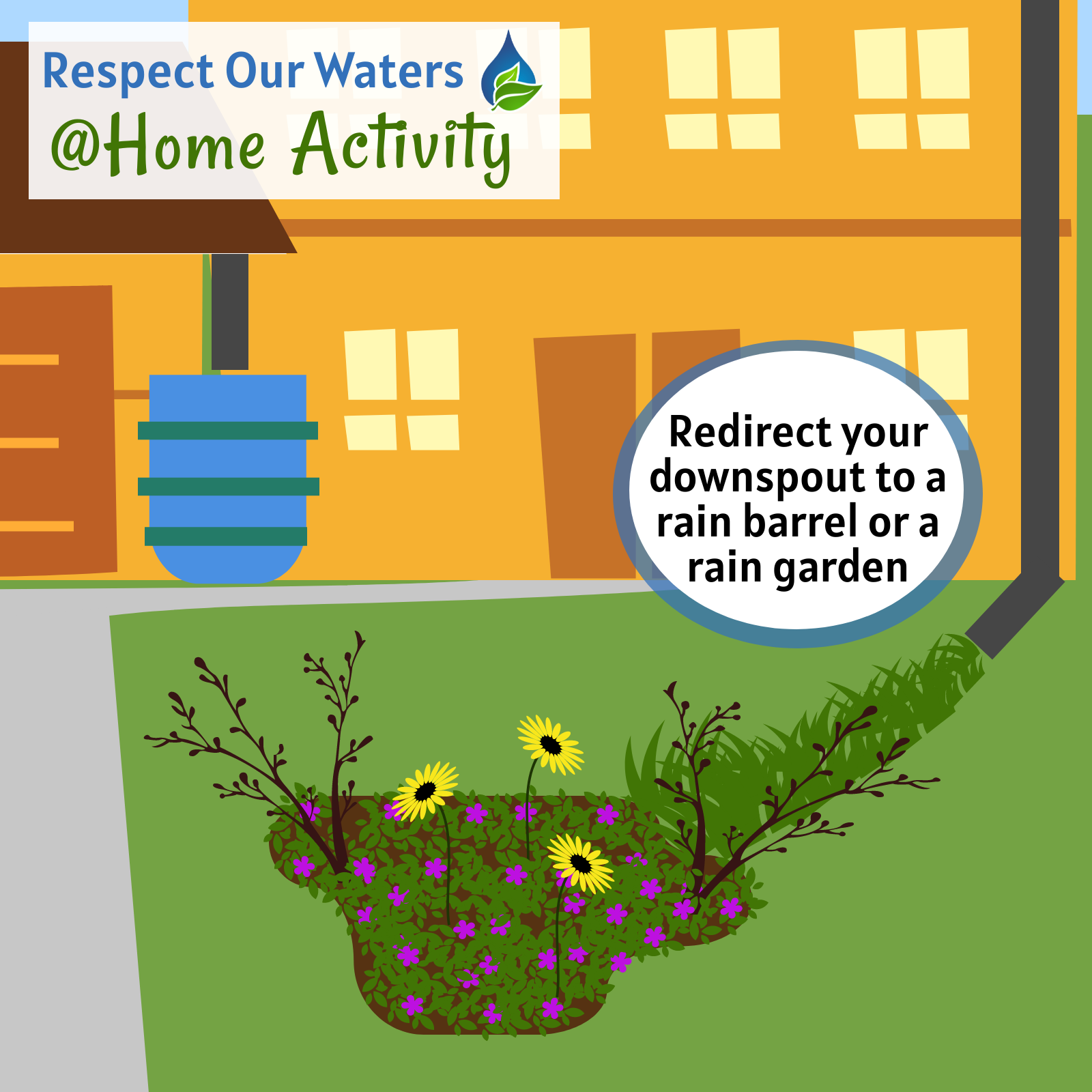Native Rain gardens
This isn’t just any garden. A rain garden is unique in that it is specifically designed to absorb rainwater. And that’s great because it means yard and basement flood control and less garden watering for you!
Rain gardens are located in places that receive flash floodings such as near a downspout or within the lowest-lying terrain. It is crafted from a dug-out depression which is then planted with native plants that offer tremendous infiltration and pollutant processing power.
How Does a Native Rain Garden Work?
When stormwater enters a rain garden, it is soaked up by the soil and the long and robust roots of native plants. From there it can move underground and reconnect with groundwater. Without this infiltration, stormwater will instead move across waterproof surfaces such as roads and parking lots, pick up pollutants and dump them into nearby streams, rivers and lakes at rates that harm water quality.
Downspout directed near a Wisconsin native Butterfly Milkweed plant (Asclepias tuberosa)
How To Build A Rain Garden
Use the Guide Below!
Pick a Good Site – Find a spot where the garden will receive stormwater runoff. This could be an area of lawn that floods, or near a downspout, patio or driveway where stormwater quickly moves off the property.
Choose Appropriate Plants – Select Wisconsin native plants capable of withstanding the site's soil, sunlight, and shade conditions, as well as those that tolerate the flood and drought cycles associated with rain gardens.
Call Diggers Hotline - (1-800-242-8511) at least three days before to prevent digging into power lines or pipes.
Prepare the Bed Correctly - The goal is a flat and level bottom. Dig 4-8 inches deep and heap the soil around the edge (creating a berm) to keep water in.
Plant Natives One Foot Apart - Then spread mulch three inches deep throughout the garden to keep in moisture and prevent weeds.
Give It Some TLC – Water plants immediately after planting and continue to water twice a week during dry times until the plants establish. During the first year, water if there is an official drought. Do not water after the first year.
Side view of rain garden depression and berm. Image provided by the WI DNR Manual - Rain Gardens: A Guide for Homeowners and Landscapers. You can find this guide under the “How to Build a Rain Garden” section.



